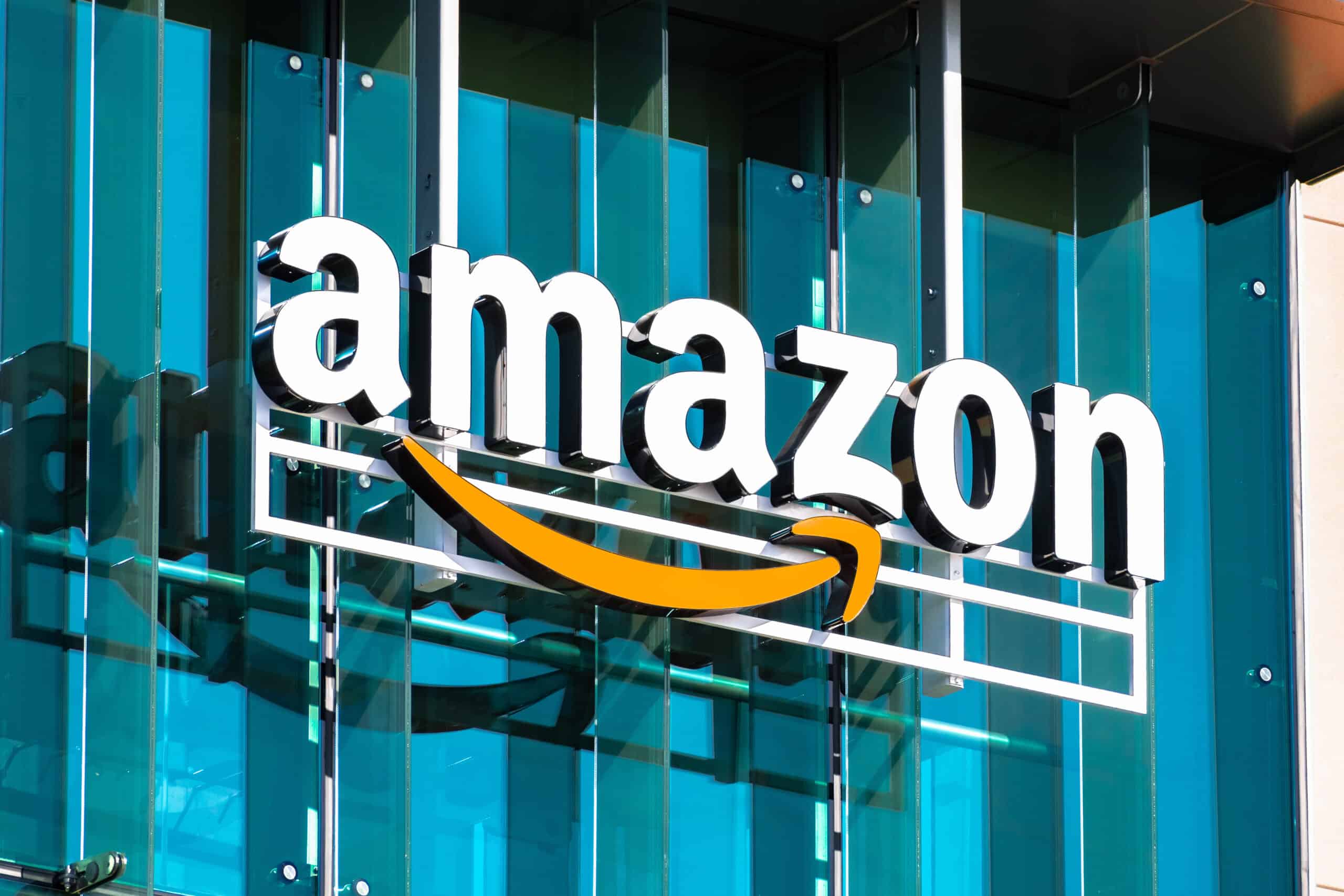When it comes to the website of the world’s largest online retailer, a lot of work goes into what you see on the homepage. In 2024, billions and billions of people will have visited the Amazon.com homepage to order everything from books, socks, measuring tape, automobile parts, computers, and everything in between.
According to SimilarWeb, Amazon.com is currently the 13th most visited website globally. Only sites like Google, YouTube, Facebook, and Wikipedia rank higher. Amazon launched as an online bookstore on July 16, 1995. It would take another three years before it began selling music and videos, and it only launched third-party seller products in 2000.
Fast-forward to 2004, when Amazon launched Amazon Prime. Everything changed. From this moment on, online retail will always be different, with the promise of two-day shipping and, eventually, movie streaming and more.
The Homepage
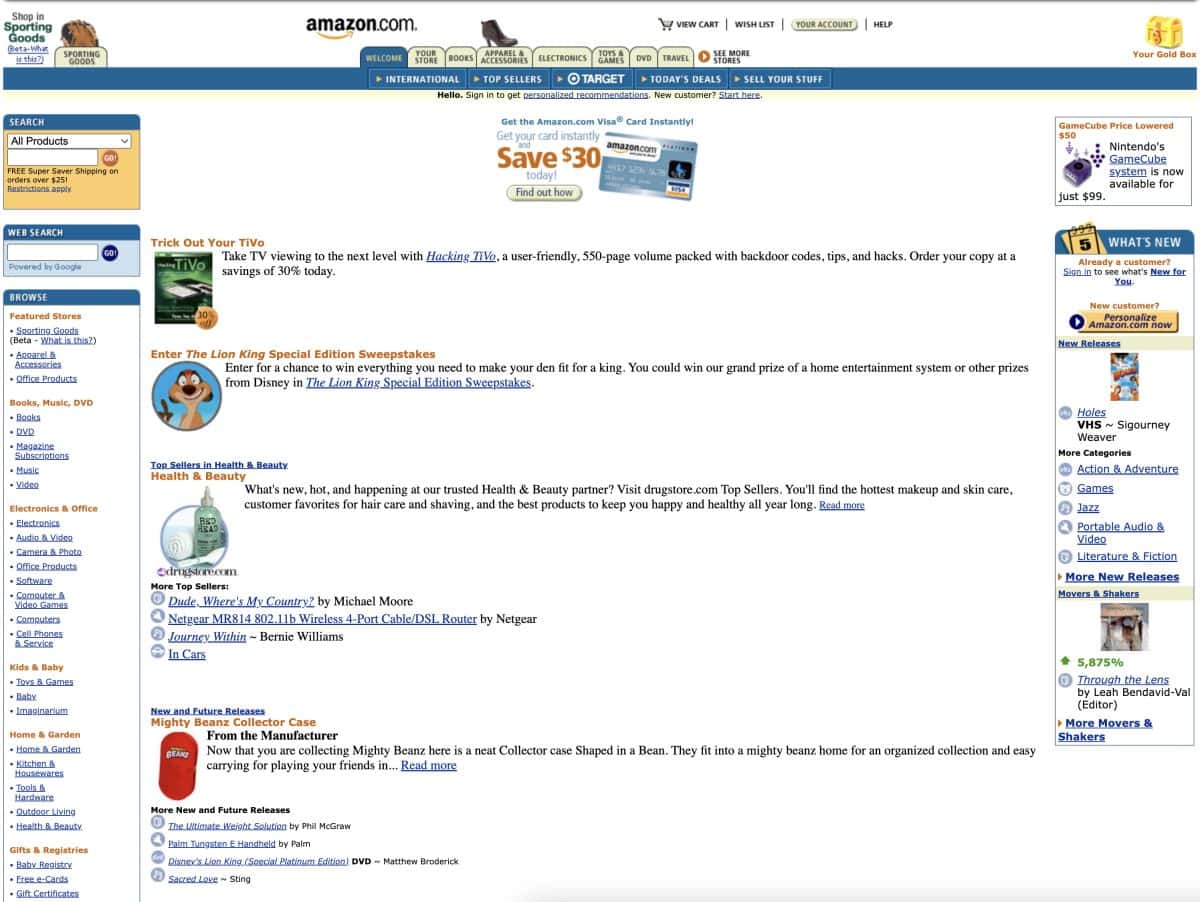
Everything about Amazon’s success stems from its homepage. In 2003, the Amazon homepage emerged from the dot-com bubble and ramped up its offerings. This included books, apparel and accessories, electronics, toys and games, DVDs, travel, and more. The left side of the website expanded the category of products, while the right-hand side was more about personalization based on previous shopping interests.
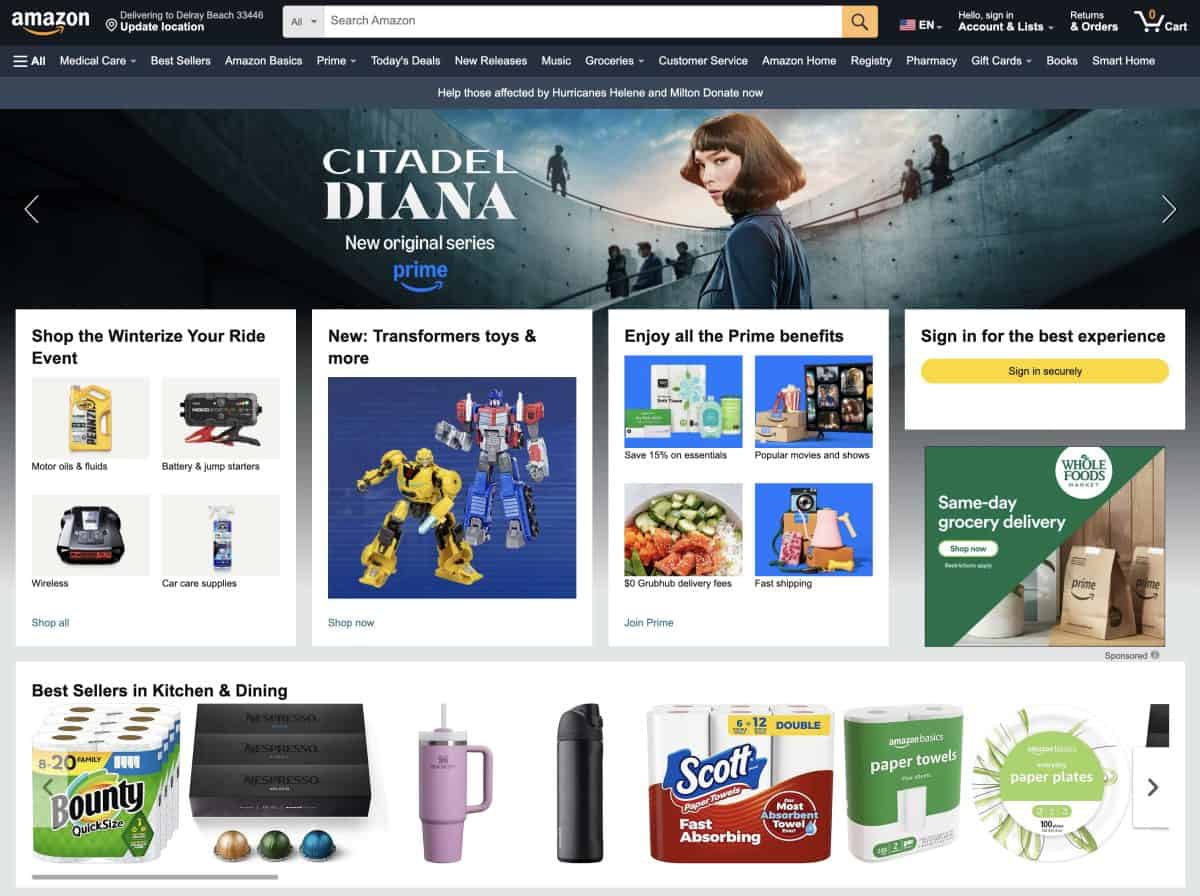
Oh, how far the Amazon website has come when you compare the site to October 2024. While the 2003 website allows for a ton of extra whitespace, every bit of the page is used in modern times. It’s very personalized with best sellers and categories that might be interesting to you. In addition, you also have a rotating carousel that promotes key sales as well as Amazon’s streaming service, Prime Video.
Categories Galore

One of the biggest ways to see the growth of Amazon’s website and the company’s growth is through the toolbar. On the 2003 website, you have the bare minimum of what a customer might expect. Along with the categories listed above, you also have Top Sellers, a link to Target, Today’s Deals, and Sell Your Stuff. Interestingly, Amazon made it very easy to sell on the website back then.

Today, Amazon’s website is a far cry from the past. Today’s toolbar is a glimpse into just how large Amazon has become. You have traditional staples like “Best Sellers” and a link to Amazon Basics, an in-house brand that covers everything from batteries to backpacks. You also have primary placement for the company’s grocery and pharmacy offerings, emphasizing how Amazon is becoming a one-stop shop for everything in your life.
All The Deals
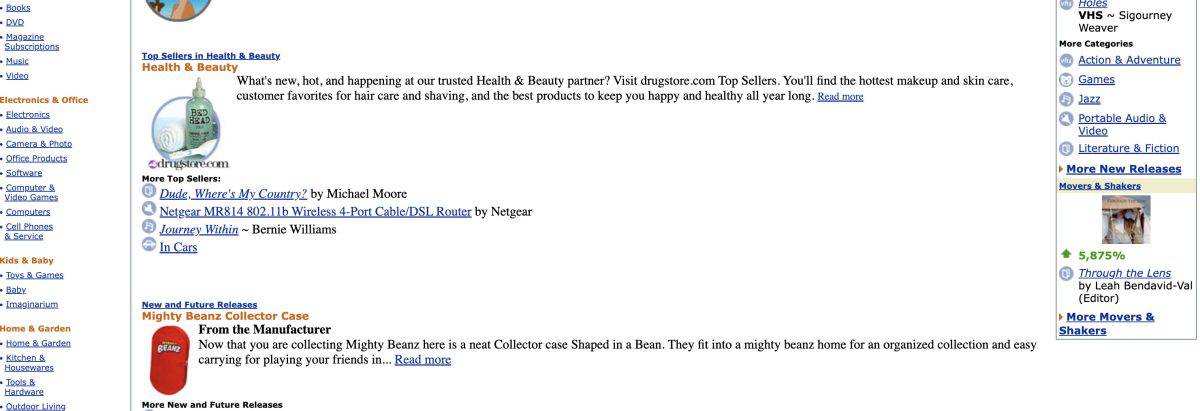
As you might expect with Amazon, deals are the name of the game. One of the biggest advantages of shopping at Amazon has always been the better pricing. On this 2003 page, you can see where it lists top sellers in Health & Beauty, but outside of that, there is little else that Amazon promotes to bump up your interest that would be directly personalized for you. In fact, personalization wasn’t emphasized in a big way in 2003 at all.
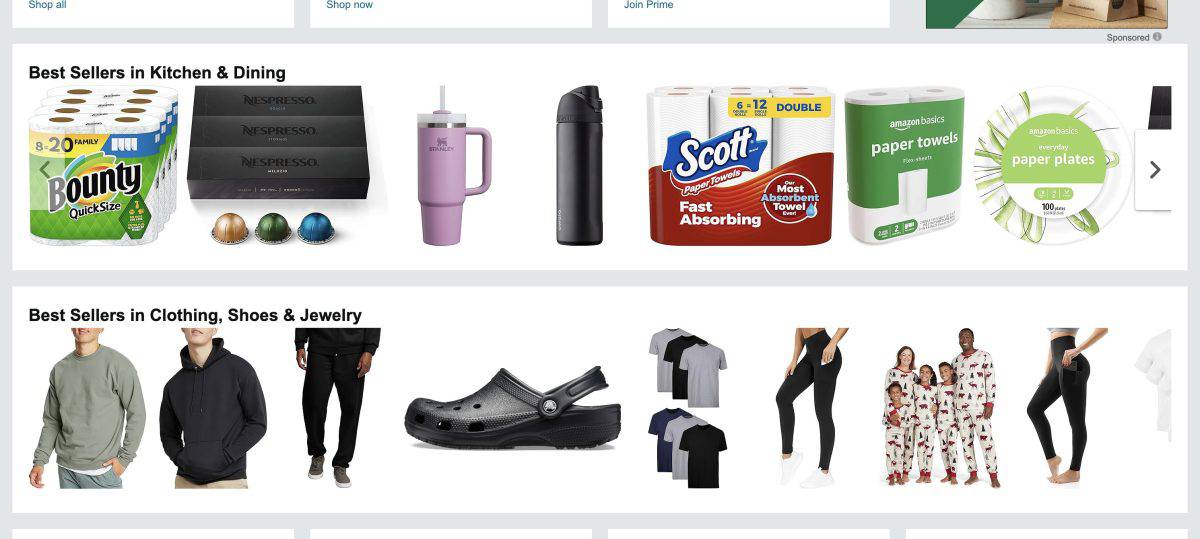
Compare this small section of its 2003 website dedicated to deals to today. It’s clear that Amazon places far more emphasis on deals today, and they do so with an algorithm that puts products in front of you that you know you’ll be interested in. There’s far more revenue potential from what Amazon is doing today, and it shows the company’s growth by emphasizing its focus on driving add-on sales on top of products you may be visiting the page already determined to buy.
Personalize Everything
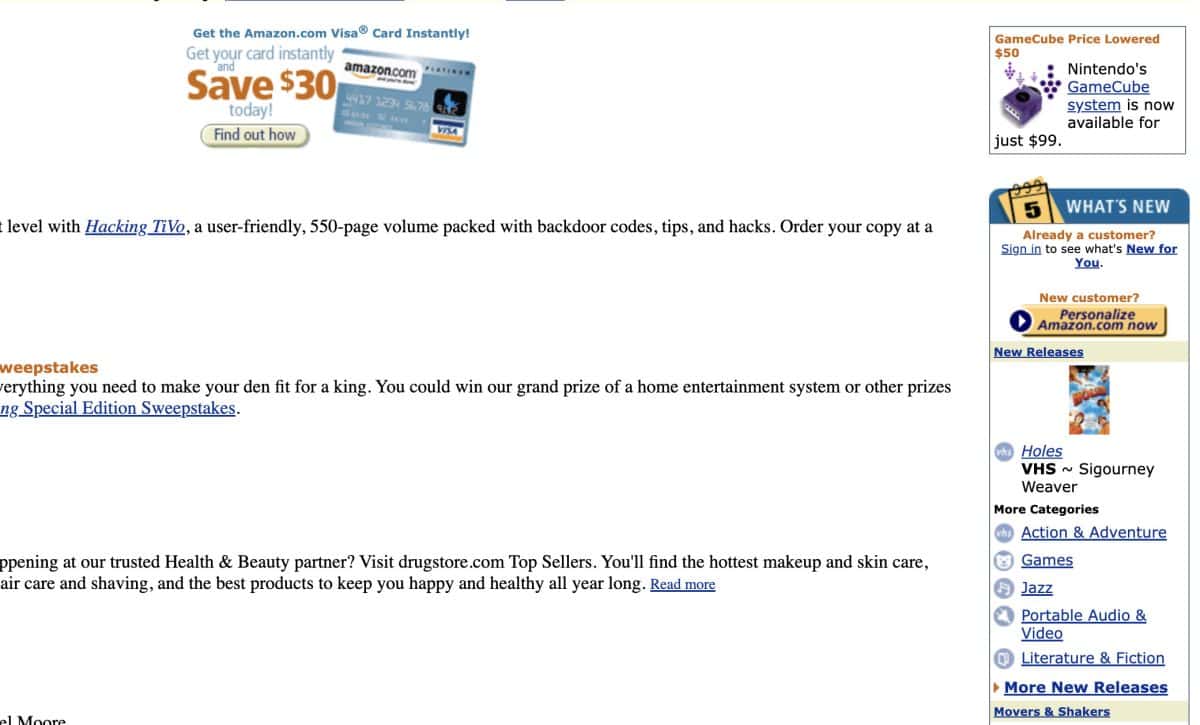
Keeping on top of personalizing everything is something Amazon didn’t do for years until after the website launch. As a result, there is a lot of wasted space on Amazon’s 2003 website. It’s more of a general search that allows you to find items that Amazon pushes toward everyone and necessarily gears toward you. The caveat is that Amazon does offer a box on the right-hand side of the site to try and personalize the site, but it is constrained compared to today.
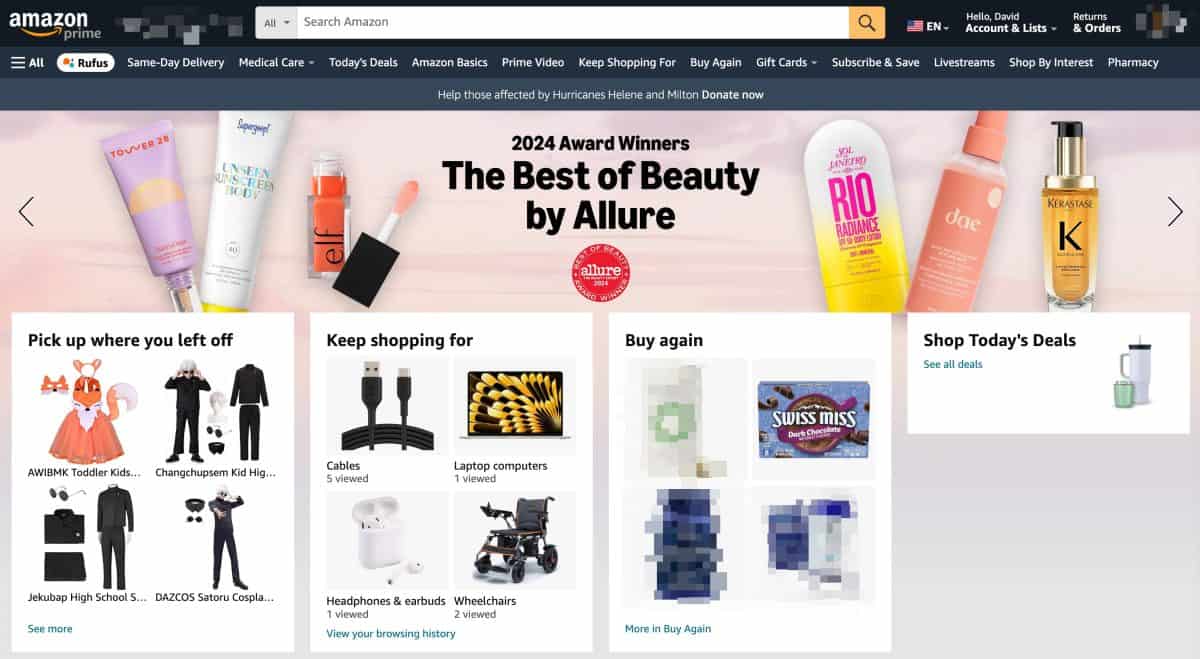
Today’s Amazon website is filled with personalization capabilities, and it’s not just limited to products you can buy. On Amazon’s homepage, you see a listing of items you may have left off when searching for items you want to keep shopping for. Better yet, there is a list of items you can “Buy Again” that you might otherwise be running low on. Separately, a “Today’s Deals” box shows you things of interest.
Amazon’s Growth
Tracing the history of Amazon’s website and its growth over time is an inside look at how Amazon has grown as a company. Additions to its website, like increased personalization, a pharmacy, grocery, and streaming video, indicate Amazon’s obsession with becoming a one-stop shop for everything you might want or need to do online. The good news is that I’m all in and can’t imagine returning to a world without Amazon.
Want to Retire Early? Start Here (Sponsor)
Want retirement to come a few years earlier than you’d planned? Or are you ready to retire now, but want an extra set of eyes on your finances?
Now you can speak with up to 3 financial experts in your area for FREE. By simply clicking here you can begin to match with financial professionals who can help you build your plan to retire early. And the best part? The first conversation with them is free.
Click here to match with up to 3 financial pros who would be excited to help you make financial decisions.
The image featured at the top of this post is ©Sundry Photography/Shutterstock.com.
